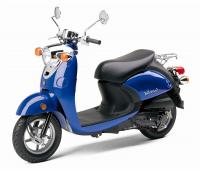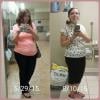Search the Community
Showing results for 'alcohol'.
Found 17,501 results
-
yea sugar alcohols are no joke. i never liked dark chocolate but because it has fewer calories and its good for you i can now enjoy it.
-
If you mean drinking alcohol, wait at least 6-8 months before you try 1 drink.
-


giving yourself injections to prevent blood clots after surgery
4LgrLife_53 replied to wannaBthinsoon's topic in PRE-Operation Weight Loss Surgery Q&A
It's not as hard as it sounds. When I had to give myself Lovenox injections, both last year (following ankle surgery), and after my gastric sleeve surgery, it was no big deal at all. The injections (with my pharmacy anyway) were prefilled syringes. All I had to do was use an alcohol wipe (those little square packages) where I was going to stick myself with the needle. I would pinch (not hard) a bit of the fatty tissue to the right and left of my navel (you want to alternate sides each day) and stick, then press the plunger on top of the syringe. They are very small needles and not painful at all. The medicine tends to burn a little going in, and you shouldn't rub the area after the injection. A nurse showed me how to do these injections after my ankle surgery last year, and a nurse can show you how it's done or your facility may have a video tape presentation of the procedure. It is very simple and very painless. -
Definitely watch the alcohol. When you're out, think of yourself as the designated driver. A DD doesn't drink plus there's always water.
-
Absolutely ma'am! You may be drinking too many calories... 5oz glass of wine is about 100 cals 1.5oz of alcohol is about 100 cals not to mention any mixers... Don't over do it. You came all this way, don't sabatoge yourself.
-


How soon is TOO SOON for a little alcohol?
cinward2001 replied to lankymom's topic in Gastric Sleeve Surgery Forums
Why not have a "virgin" drink? Then, you're still being sociable with your friends, no one will question that you're not drinking because you have a drink in front of you. Unless, of course, the purpose of the drink is to get buzzed or drunk, but then, you're not really drinking for the social aspect but to get drunk. So my advice...really THINK about why you're wanting to drink. It's empty calories, it can be hazardous to your healthy, etc. If it really is to be sociable, you can do that without the alcohol. -
I agree with the comment that "everyone is different". Take your time as you re-introduce spice into your food. A little at a time will tell you a lot about your tolerance. As you can read above, there are lots of us who have had no trouble with potentially troublesome foods like spice or alcohol. Good luck to you.
-
I am 25 mo post op and never reached my goal weight though I did lose 120 after surgery. I have gained 14 lbs this past year. I too had some family things that enticed me back to sweets, carbs, and alcohol. I got back on this site a couple of weeks ago and see I am not the only one! Last week I read about the 5 day pouch test on this forum. I googled it and read about it. I started it last Thursday. I feel so much better! My cravings are gone and I've lost 5 lbs. This weight thing is truly a life long struggle. Good luck to you!
-
As long as your in weight loss mode your shouldnt drink. Alcohol reduces an enzime in your body required to breakdown the fat you want to lose for 3 days. That's right one drinks significantly reduces your weight loss for 3 days. In essence, slows your weight loss down to half. Personally I dont think 20 year olds have enough experience in life to handle the mental pressure of bariatric surgery. I know I would not have for exactly what your concerned about, drinking. Good luck on your journey. Also leaving your comfort zone 3 days after surgery would not be my first choice.
-
Yeah it's awful can't do sugar alcohols...chocolate even tiny amounts fruit too is not working for me salad which I so love and miss seems to get to me too if I eat more than two bites tried one scoop of vanilla ice cream once ... Nope made me wish for death won't be doing that again was told I could have turkey breakfast sausage can only eat one tiny piece nope sleeve says bitch back off lol and I listen it's the boss now it seems
-


How the heck did I gain a pound?
NtvTxn replied to Terrib's topic in POST-Operation Weight Loss Surgery Q&A
Terrib - First of all, weighing yourself is how you keep a tab on how you are doing and nip anything in the bud if need be. I have weighed every single day, first thing in the morning, since I came home from the hospital. We were told to at the seminar I attended! With that said, you will go up and down, you need to be told now, DEAL WITH IT!!!! It's part of the journey we all go through. If you are doing what you are suppose to do, you will lose weight, you WILL be successful!!! You've had approx. 85% of your stomach removed. It's impossible not to!!! Relax and enjoy all the changes. Take it from someone who is 11 months out, a year from now, you'll look back and you will not believe what your life use to be like!! I would hold on to a lb or two, go up with them, back down, up and down for three, four or five days....until I'd finally lose them for good. Usually I could up my Protein and Water and that would help, but it is normal - I found that out at my support group, everyone goes through it. I followed the rules, I never, ever cheated. I treated this as the most important diet of my life.....I still measure and weigh all my food when I'm at home; when we're out I have to "eyeball" it, but when it's brought to me, I divide on my plate what I am going to eat, or else I share with my husband. It's easy to take 'one bite too many' when you're out and visiting. The only way this won't work is if you are drinking a couple of thousand calories per day, I.E. cokes, milkshakes, alcohol....followed up with Twinkies, donuts....you get the picture. We can sabotage ourselves. This is a tool we WORK with, not a fix all. Good luck and enjoy....it's a fun, fun ride!!! -


How soon is TOO SOON for a little alcohol?
leanintoit replied to lankymom's topic in Gastric Sleeve Surgery Forums
It has been great reading your thoughts and experiences on alcohol! Thank you for sharing on this touchy topic and staying civil. My surgeon's practice puts alcohol in the "never or very limited" category. Pre-op I might have a glass or two of red wine per month or I might go months without any. Red wine has many benefits to our health and I am not at risk for addiction or overuse. I am four and a half weeks out and I had a glass of red wine last night at a benefit. (I was happily hydrated prior to and drank water along with it.) It took me 2.5 hours to drink it but I was grateful to enjoy it. At that rate, I felt no effects of the alcohol. My philosophy is that I am gladly giving up many, many things in pursuit of better health. An occasional glass of red wine is beneficial to my heart and my sanity. I am not trying to push my philosophy on anyone else. We all know what is best for ourselves and, beginning with this surgery, we are on each our way to improved lifestyles. I wish every one of you the best and am beyond grateful for this community! -
Well, I cruised 6 weeks after surgery. Typically vacation drinking for me entails carrying a martini in each hand to balance myself as I walk around the ship LOL I did not drink much this time, but when I did I had no issues. My tolerance was a little lower, but not much. Probably because I couldn't sip an adult beverage while eating. I also made homemade margaritas last night to watch Idol. They went down really easily. It really is empty calories, so I am going to keep having a beverage down to 1 or 2 one night a week at most. The best "diet" alcoholic beverage is a vodka martini up. Not an insane amount of calories, no carbs (or virtually none), and more bang for your buck so to speak. You can sip on one of those for an hour no problem. Now if you slam it, well then you may get a tee bit wipsy
-
I joined this forum today and read a lot of interesting posts with different points of view on the Lap Band. I decided to share my story and let anyone who reads it take from it what helps them. I was banded three years ago in Mexico. To date I have lost 30 pounds. I would say it’s more of a maintenance weight of 185. Is it a “fail?” I don’t know… I’m still in deliberations. 1) I can tell you I have always had problems getting protein down from the beginning so I chose foods that went down easier. It didn’t matter what size fill I had. Protein was not my friend, ever. But I was eating 1/3 my normal portion and sometimes even less. But it was pasta, rice, and adding gravies made food go down even easier so I wouldn’t get stuck, which happened quite frequently. That was a wrong choice, so for any reader here, don’t do this! When my surgery was performed the Dr. fixed what he described the biggest Hiatal hernia he’d seen, which would explain the feeling of Satan living in my stomach for years. I recently had bouts of heart burn, waking from sleep choking, a lot of sliming episodes and it didn’t matter what I ate, I ignored it and went to liquids for a day or two on several occasions with success (but not this last time), again don’t do this! My point…I had to go back to the Dr. 2 weeks ago, it was an emergency visit because I let it get to the point where water was having a hard time going down and staying down (for a couple of days. You know what I’m going to say, don’t ignore this symptom of a tight band). The Dr. thought that I may have had a slipped band and had symptoms of a perforated stomach (from what happens when you get stuck repeatedly and ignore the signs of a tight band, yes, vomiting food back up). Turns out it was neither of the above and with an un-fill (now two weeks) I am fine and enjoying protein and other foods I still shouldn’t be eating BUT CAN. Big FAIL on my part! I realized the other day with a 5 pound gain in 2 weeks that HELL, like alcoholism, drug addiction, and other addictions, that food is an addiction for most of us on here that have had the surgery whether we have all realized that or not. We’re just not wired like thin people, bless their tiny little bodies . So I proclaim tomorrow is day one again for me with eyes wide open. I’ve already messed up breakfast today! In two weeks I’ll get a refill and start counting down again, smarter this time. A poke from someone on here now and then would be great. I will say that the band stopped weight gain but I don’t think my Dr. would agree that using this tool upside down is how it works. I’m glad I found this forum because when you have surgery in Mexico you go home and that’s it. You have no support group, no follow-up nutrition classes to go to, no nice office staff to check up on you to see how you are progressing or to give helpful pointers during plateauing. You are on your own to figure the whole band experience out for yourself, good, bad and indifferent.
-


Question about Alcohol ????
rducharme replied to aamandddaaaahunt's topic in PRE-Operation Weight Loss Surgery Q&A
I am curious also ? I have my sleeve May 28 (Dr Aceves) so I will be off the booze for awhile. But I do enjoy a glass of Lambrusco while I watch my TV (True Blood, Dexter, Borgias, Homeland, etc). Wondering if I will be able to sub some wine on the rocks as part of my "liquids" ? or will alcohol cause problems after a couple months post-op ? -
I absolutely understand what you are experiencing. I actually cried the day before I started my "pre-op". I'm scheduled for Sept 27th so I still have a ways to go. But decided I'm starting now and not waiting for the surgery. I'm a "lightweight" but still a BMI of 36 is a lot to carry around. I cried because I started to realize I can't use food to "deal" with my stress or my fears or my emotional roller coasters. I am an addict and my drug of choice has been food. I was not always heavy, actually skinny as a kid. My weight came on after starting a small business. The more it grew, the more stressed I became. I would diet, lose weight, it would come back anytime something major came up. Now my weight has crept up to the point I'm pre diabetic. Yes, I'm active, but I eat entirely too much food and not good food either. Sitting down and eating an entire Ben and Jerry's because of a bad day at work can no longer happen. I must view food at a source of fuel, not an emotional bandaid. I am following a low carb diet, so thankfully all cravings are gone. But, right now I"m in the place that I must avoid temptations, just like an alcoholic. Something that did help was putting out in the open that I have an issue with food. I discussed this with my husband. He's totally on board. Our kids are grown so it's just he and I. I am cooking for myself and than he gets extras like garlic bread with his dinner. He's the type that can eat anything and has never gained weight. But I do know he enjoys food, but it's just something you do when you are hungry. In the end, the place I am at now is I must do something. I am tired of feeling the way I feel, tired of be concerned about my health, tired of clothes fitting like crap, tired of this emotional weight I've carried around for too long. I'm tired of my weight being an issue in my life. So, when the head stuff starts, this is what I think about. And believing it's going to be OK.
-


Making Peace with Food: WLS and OA
Inner Surfer Girl posted a topic in General Weight Loss Surgery Discussions
As is often noted, when performing surgery, our surgeon only operates on our digestive tract, not our brains. Many of us come to WLS with a long time or even a lifetime dysfunctional relationship with food and/or our bodies. One resource for making peace with food and our bodies is Overeater's Anonymous (OA). OA is a worldwide fellowship that is fashioned after Alcoholic's Anonymous. OA uses AA's 12-step model of recovery and changes the words alcohol and alcoholic to food and compulsive eater. If you are struggling with food and emotional eating or other issues around food and eating (anorexia, bulimia, compulsive eating, binge eating, body dysmorphia, food obsession, etc.), then you may want to explore OA. The website (OA.org), has information about the program, literature, meeting lists, podcasts, and other useful information. Here is a good blog post about how WLS and OA can work together: http://www.mybariatriclife.org/oa-overeaters-anonymous-after-surgery/ -


Fecal Color, Is There Something Wrong?
LadyIvy replied to Martinarquero's topic in POST-Operation Weight Loss Surgery Q&A
Yellow Stool Yellow stool can indicate that food is passing through the digestive tract relatively quickly. Yellow stool can be found in people with GERD (gastroesophageal reflux disease). Symptoms of GERD include heartburn, chest pain, sore throat, chronic cough, and wheezing. Symptoms are usually worse when lying down or bending. Foods that can worsen GERD symptoms include peppermint, fatty foods, alcohol, coffee, and chocolate. Yellow stool can also result from insuffient bile output. Bile salts from the liver gives stool its brownish color. When bile output is diminished, it often first appears as yellow stool. If there is a greater reduction in bile output, stool lose almost all of its color, becoming pale or grey. If the onset is sudden, yellow stool can also be a sign of a bacterial infection in the intestines. http://altmedicine.about.com/od/gettingdiagnosed/a/stools.htm -


California Vacation in six days!
terry1118 replied to terry1118's topic in Tell Your Weight Loss Surgery Story
Well it wasn't exactly warm for the first few days I was there. Nights about 45° and days 58-60°. After that it got into the high sixties and you still needed a jacket at night. Then suddenly, on Tuesday the temp shot up to 97° and Yesterday it was 90°. A lot of good that did me - Tuesday I had to take my son's girl to San Diego Airport, and Wednesday morning I was back at the airport for my flight home. But the strong Santa Anna winds damaged the radar that services our airport and the flights were grounded for hours. When we finally took off at 5pm the winds forced us to use a runway that took us over the city skyline and the mountains behind it so we couldn't carry a full load of fuel if we wanted to clear it. That meant an unscheduled stop in Indiana for fuel to make it to our next stop in Maryland. Maryland was having bad weather and grounding flights but our late takeoff meant the storms were over by our arrival there. I landed in Providence at 3:30am and had to wake my husband to come and get me. I got home at 5am this morning and slept till noon! Longest day ever! Hats off to the flight crew for trying to make the best of a bad situation. The Captain invited us into the cockpit one by one to take pictures, answer questions, and explain how everything works. When we finally took off all the alcohol was free - a glass of wine helped me sleep through the longest leg of our long flight. The attendants did the best they could to ease tensions, and meet everyone's needs. So glad to be home but it's not exactly warm here! Lol And I got a tattoo Monday night. My first one! My son paid for it for Mother's Day. It hurt but my Marine son was watching so I took it like a Marine mom should! :-) -
I'm on hold right now for banding for other medical reasons, but I have 8 beautiful grandchildren. I would love to be around many more years to enjoy them. Unfortunately, I'm sidelined for awhile, but the band is in my future. I hope you are being banded here in the states even if it means jumping through a lot of hoops. My problems were found here, and I don't think if I had gone out of country they would have been discovered. I think out of country is fine for the younger ones, but I think anyone older should have everything available to them in the way of testing. By he way I was married twice myself. The first ended in divorce after 16 years of his being an alcoholic. I couldn't stick around anymore and he died at an early age from cirrhosis of the liver. I married my soul mate the second time around and had 18 wonderful years with him before he died in a motor vehicle accident. There isn't a day I don't miss him. I wish you the best of luck and God Speed. Dody
-
I was wanting to know how people go out to eat? I am going out tonight with a friend and I'd like to have a drink and dinner but I get FULL.
-


5wks till surgery and I have a few questions...
Lissapmkn1 replied to MzBree's topic in POST-Operation Weight Loss Surgery Q&A
James is right…the walking was the key to no pain. I came out of surgery around 4 pm and was walking at 7 pm and did walk every 2 hours, with no pain. The only "pain" was dragging the IV around. They will send you to have do a "leak" test and that required drinking a little Fluid so they could see if it went through without leaks. The beds aren't very cushy, so I sat up in a chair in the room a lot because the bed hurt my bottom. Made it easier to get up to walk also. While I had someone stay in the room with me, I found the staff to be really kind and attentive and sent my mom back to the hotel so she could sleep. My surgical location was 4 hours from where i live, so the journey home was a bit arduous - had to stop every 45 minutes to walk for 15 to prevent blood clots. Once home, my incisions never hurt (they were all laparoscopic and small), and getting up and down wasn't difficult either. I was on Protein shakes for 2 weeks after and I think that was the most difficult part. Everything tasted super sweet but I plugged my nose and drank 4 oz 4 times a day! I was also sent home with medication for my gall bladder (for some docs,it's standard procedure) to prevent any gall bladder issues. You will have some trouble getting in all the Vitamins, Water and protein to being with just because your tummy is so small. Just be diligent every 15 minutes or so to drink water and take a Vitamin or pill when you do. Once I was on soft foods (2 weeks out of surgery), I had to focus on getting in 92 g of protein. I had a hard time doing so because my tummy was so small - had to really plan! I went back on all foods on August 15th however, I have kept out of my diet anything but lean protein, fruit, veggies and sugar free popsicles. I was a carb eater and so I have left out bread, tortillas, crackers, Cereal etc..and my weight continues to decline. Started at 368 prior to surgery and am now at 298. I am eating Quest Protein Bars and have found them a great help in getting in all my daily protein. These were recommended by my nutritionist. I order them on quest.com and they are shipped to my door in about 3 days. They are made with sugar alcohol and can be pretty sweet. I eat half a bar at a time because they really fill me up and are so sweet. I did have some odd sensations when it came to smelling food because my appetite is gone. Some smells nauseate me and I don't like things I used to , but all in all it's a good thing! My head likes to tell me I am hungry when I am not, so I have been really paying attention to that issue. My goal is to be down 100 pounds total by Christmas and down an additional 75 by June. Again - good luck!! Clarissa -


Drinking Alcohol After Being Banded?
kll724 replied to SarahCasey's topic in LAP-BAND Surgery Forums
I don't drink alcohol, much. But he couple times I have had a drink, it goes to my head quicker. I have lost 100 lbs, so size makes a difference. But 1 drink, gives me a buzz. I had a Bud light on tap watching football yesterday, just one was all that I could drink. So, my answer is "yes" it affects you differently. I have been banded for 1 year. Karen(kll724) -


Drinking Alcohol After Being Banded?
JavaKing replied to SarahCasey's topic in LAP-BAND Surgery Forums
Lets do the math on this. (The calorie count is rough) Beer in general has 150 Calories per serving. Light Beer Calories 100 Extra Light beer has 64 Hard Liquor has 60 Wine has 120 IPA Beer has about 250 Calories Sweet Drinks such as Mikes Hard Lemonade etc about 250 Calories If you have about 10 IPA Beers per week that is a potential extra pound of weight loss you could have had but the reality you gained it as you didn't loose it because of the alcohol. Can you drink alcohol? It is not recommended. you will loose weight much faster if you don't. -


Drinking Alcohol After Being Banded?
MaggieB replied to SarahCasey's topic in LAP-BAND Surgery Forums
You can still drink alcohol. I choose not to - too many calories. Most of the time I am too full. I have issues with beer due to the carbonation - makes me feel bloated and uncomfortable, I get the same feeling with sodas.














